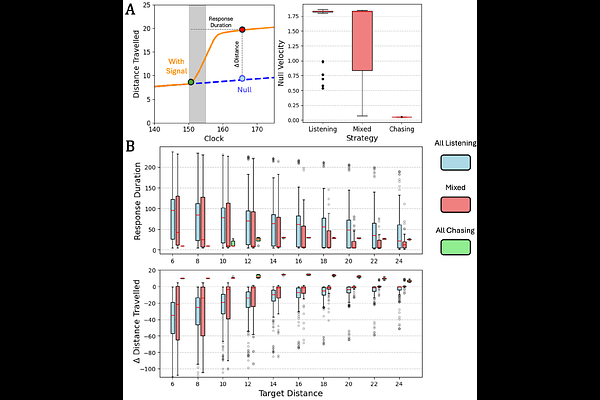The Role of Signal in Producing Saltatory Approach to Cryptic Stationary Targets

The Role of Signal in Producing Saltatory Approach to Cryptic Stationary Targets
Forbes, E.; Todd, P. M.; Beer, R. D.
AbstractSaltatory movement strategies in animal search are well known, but their role in pursuit and localization of targets is less so. There are multiple features of forager-target interactions that may generate saltatory forager movement during pursuit and/or localization of the target. Here, we explore how the reliability of the target\'s signal and the dependence of the forager\'s perception of that signal on the forager\'s own motion can generate a variety of different continuous and saltatory pursuit patterns in evolved model foragers with stationary targets. We use dynamical analyses of evolved forager nervous systems to show the possible mechanisms through which saltatory movement was generated and how signals influence those movements in a foraging animal. Saltatory movement during pursuit independent of signal was routinely found when the forager\'s perception depended on its movement. Saltatory movement patterns could also be generated in otherwise cruise-like behaviors when target signal either excited or inhibited ongoing forager movement. Additionally, the magnitude of the signal\'s influence was found to depend on proximity to the target during pursuit. These models present hypotheses for future empirical research and emphasize the importance of exploring variation in animal movement during different phases of foraging.